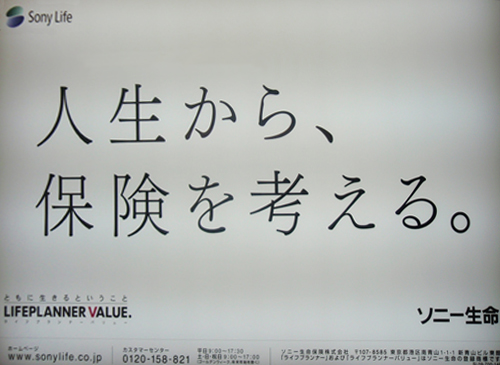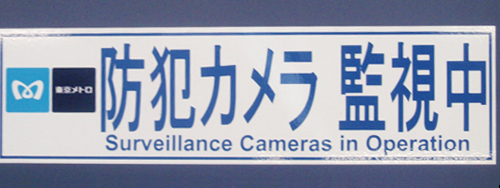170. The "Left Hill" Radical: 阜 and 阝
You may have noticed that the "left hill" radical, 阝, looks identical to the "right village" radical. As I wrote in Radical Note 163, which is about that right-side radical, some dictionaries treat these two radicals as distinct, whereas other sources lump them together. Joy o' Kanji is in the former camp, making this distinction:
radical 163: the "right village" radical, 阝, as in 都 (355: metropolis, capital)
radical 170: the "left hill" radical, 阝, as in 院 (229: institution)
Before I repeat anything more from Radical Note 163, I will ask you to go read it. Not everything there pertains to the "left hill" radical, but these parts do:
• How 阜 (2103: hill) was the original shape that evolved into 阝 on the left.
• How radical 170 goes by the names こざと, こざとへん, or おか.
Hope you liked my cheat sheet!
Now let's forget about 阝 on the right side. As radical 170, this shape appears in 33 Joyo kanji. When this radical is on duty (as it is in 31 characters), 阝 is always on the left side, except in 阜 itself. By contrast, 阝is a mere component in 堕 (1539: degenerate) and 墜 (1606: to drop down) and perches on the upper left.
Photo Credit: Eve Kushner
The rightmost character in this sign at a Sanda shrine shows that, even though 阝 is always on the left side as radical 170, it can be tucked under the "grass" radical 艹. This kanji, which means "Buddha," is non-Joyo.
Hills Take a Long Time to Erode
Henshall says in his newer edition that Radical 170 is a pictograph of a “hill” or “mound” and sees “terraced slopes” as an extended sense. In an unusually high number of Joyo kanji, this radical maintains its etymological connection to "hill." It's rare to find such consistency in the kanji world. Even when the rest of the character is "of confused etymology," as Henshall likes to say, the left part remains solid in its meaning of "hill." I guess hills take a long time to erode!
Let's look at two characters with the most direct reflection of this meaning:
阪 (2097: Osaka; slope)
Kanjigen says that the radical means “hill” here and that the phonetic 反 means “to bend backward, incline” in this context.
険 (662: danger; steep)
According to Henshall, the part on the left is "hill," whereas the part on the right acts phonetically to express "combine." When you have "combined hills," he says, you have "particularly hilly terrain." Such a landscape is of course dangerously steep.

Photo Credit: Eve Kushner
Not surprisingly, an ad for Sony Life Insurance Company mentions 保険 (ほけん: insurance), which includes 険 (662: danger; steep). The other large words in the sign are 人生 (じんせい: (one's) life) and 考える (かんがえる: to consider). The sentence translates as follows: "We think about insurance in terms of our lives."
Obstructions
The hilliness is less apparent in the present-day meanings of several other kanji, but again, if you dig into them thar hills, you find etymological gold. (Sorry, I couldn't resist!) To put it much more simply, Henshall says that the left sides of the following characters mean "hill":
障 (902: hindrance)
The part on the right acts phonetically to express "barrier." When hills form a barrier, we have a "hindrance" or "blockage"!
阻 (1505: to obstruct)
The right side literally means "to pile up." When you have "piled-up hills," you have another "hindrance" or "obstruction."
陥 (1098: to fall in; trap)
The newer edition of Henshall says that the 臽 depicted a "person over a hole," thereby meaning "pit, hole." The ancient Chinese later added the radical, which means “hill” or “terraced slope” here. Thus, 陥 represented "elevated land that caves in" or "to get trapped, fall in," depending on which scholar you ask.
Photo Credit: Eve Kushner
In Nagoya Castle, a sign warns against interacting with an exhibit in a dangerous way, as this can be the cause (原因, げんいん) of malfunctions (故障, こしょう). You already know 障 (902: hindrance); the 故 here means "incident." It's hard to understand how they combine to mean "breakdown, malfunction." I would have expected 障 to hinder such an incident!
Hills Provide Good Cover
What with all these obstructions, hills can certainly be a nuisance! However, in the next examples, they're helpful:
防 (791: to prevent, guard against)
Henshall says that the right side means "side"! A hill on one side symbolizes "defense," which extends to "prevention."
隠 (1014: to conceal)
The right side acts phonetically to express "cover." If you're "covered by a hill," says Henshall, you're obscured from view. You can "hide." Wait, I thought that if you were covered by a hill, you'd be dead!
Photo Credit: Eve Kushner
Part of a sign by the headquarters (本部, ほんぶ) of the fire department (消防, しょうぼう) in the city of Kamakura (鎌倉市, かまくらし). The sign prohibits smoking and bonfires, though that part isn't shown here. What is shown is a lovely repetition of阝on both the right and the left. We've already talked about 防 (791: to prevent, guard against). A fire department prevents (防) fires and then extinguishes (消) those they haven't prevented. I suppose that's logical, but I think 火防 would have been a more logical term for "fire department"!
Hills Provide Natural Limits
We generally perceive limitations as negative things, but demarcating territory is one way in which limits are useful. (Good fences make good neighbors, and all that.) The following etymology reflects this idea:
限 (665: limit)
The right side acts phonetically to express "difficult" and maybe "turning around." If you arrive at a difficult hill and stop to look back, says Henshall, it's likely that you've reached the edge or limits of familiar territory.

Photo Credit: Eve Kushner
This sign starts with our radical! It's in 防犯 (ぼうはん: crime prevention), which combines with the katakana to form 防犯カメラ (security camera). After that comes 監視中 (かんしちゅう). In that word the first two kanji, 監視 (かんし), mean "surveillance." The -中 suffix means "during, while," which is to say "in operation" in this context.
The Hill in the Building
We don't usually find hills inside buildings, but we do in this kanji:
階 (242: floor; story, stair; counter for floors of a building)
The right side acts phonetically to express "row," says Henshall. As the left side is "terraced hillside," we have "row of terraces on a hillside." This naturally broadened to "step" or "graduation" (which doesn't involve caps and gowns but rather a stairstepped formation).
Photo Credit: Eve Kushner
This way up with 階段 (かいだん: stairs). The sign hangs inside Nagoya Castle. You've already seen 階 (242: floor; story, stair; counter for floors of a building).
Yin and Yang
Now we come to my favorite "left hill" duo, which collectively represent "yin and yang"!
陰 (1013: shade; yin; negative)
The right side gives us "covered in vapors or mist." Thus, we have the "misty, shaded side of the hill," with connotations of "secret" and "negative (yin)."
陽 (406: sunshine; yang; positive)
Here we've moved to the "sunny side of the hill," thanks to the right side, which means "sun shining down." The meaning has extended to "positive (yang)."
This is very exciting! Rarely have I seen two characters that form such a tight twosome, where one is defined against the other. Because we've taken the opportunity to examine the "left hill" radical, we can put these two kanji right next to one another and see their yin-yang relationship. As you can tell from their Henshall numbers, which are far apart, Henshall couldn't do this when he provided these two etymologies. Neither can Japanese schoolchildren; they study 陽 in third grade and 陰 in junior high. That's a long time to wait to find the other half of this pair! No wonder 陰 can mean "negative"!
